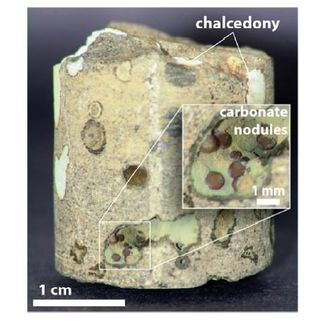Intensive land-management leaves Europe without carbon sinks
A new calculation of Europe’s greenhouse gas balance shows that emissions of methane and nitrous oxide tip the balance and eliminate Europe’s terrestrial sink of greenhouse-gases
Advertisement
Of all global carbon dioxide emissions, less than half accumulate in the atmosphere where it contributes to global warming. The remainder is hidden away in oceans and terrestrial ecosystems such as forests, grasslands and peat-lands. Stimulating this "free service" of aquatic and terrestrial ecosystems is considered one of the main, immediately available ways of reducing climate change. However, new greenhouse gas bookkeeping has revealed that for the European continent this service isn’t free after all.

In order to compute whether European landscapes store or release greenhouse gases, climatologists have for the first time also considered methane and nitrogen oxide emissions from livestock farming and intensive agriculture. The bottom line is that forests, grasslands and agriculture fields, particularly in central Europe, freely release greenhouse gas (in carbon dioxide equivalents / red colouring in diagram). In this way they balance out the effect which Russian forests have as a source of carbon dioxide storage (blue colouring), almost completely.
CarboEurope Team
Researchers from 17 European countries cooperating in the EU-Integrated Project CarboEurope, led by Detlef Schulze, of the Max Planck Institute for Biogeochemistry in Jena, Germany have compiled the first comprehensive greenhouse gas balance of Europe. They made two independent estimates: one based on what the atmosphere sees and one based on what terrestrial ecosystems see.
The new bookkeeping effort confirmed the existence of a strong carbon sink of -305 Million tonnes of carbon per year in European forests and grasslands. A sink of this magnitude could offset 19% of the emission from fossil fuel burning. However, agricultural land and drained peat-land are emitting CO2, which cancels part of this sink. The resulting net CO2 sink of the European continent is 274 Million tonnes of carbon per year - only 15% of the emissions from fossil fuel burning. But this balance is still incomplete, because all European ecosystems are managed and as a by-product of land management other powerful greenhouse gases are released - for example nitrous oxide from fertilizers applied to grassland and crops, and methane from ruminants and from peat-lands. These previously neglected emissions of greenhouse gases from land-use cancel out almost the entire carbon sink, leaving the landscape offsetting only some 2% of the CO2 emissions from households, transport and industry.
Compared to Europe as a whole, the situation is even worse for the 25 states of the European Union. Here, although forests and grasslands can compensate for 13% of the CO2 emitted by fossil fuel burning, emission of powerful greenhouse gases from agricultural emissions and peat mining reduces the effectiveness of the land surface sink to 111 Million tonnes of carbon per year, which is only 11% of the CO2 emitted by fossil fuels. However, since the emissions of methane and nitrous oxide are relatively higher in the European Union the land surface emerges as a greenhouse gas source of 34 Million tonnes of carbon per year. This effectively increases the emissions from fossil fuel burning by another 3%.
Prof Schulze said "These findings show that if the European landscape is to contribute to mitigating global warming, we need a new, different emphasis on land management. Methane and nitrous oxide are such powerful greenhouse gases; we must manage the landscape to decrease their emissions."
Original publication: E. D. Schulze, S. Luyssaert, P. Ciais, A. Freibauer, I. A. Janssens et al.; "Importance of methane and nitrous oxide for Europe’s terrestrial greenhouse-gas balance"; Nature Geoscience, November 22, 2009
































































